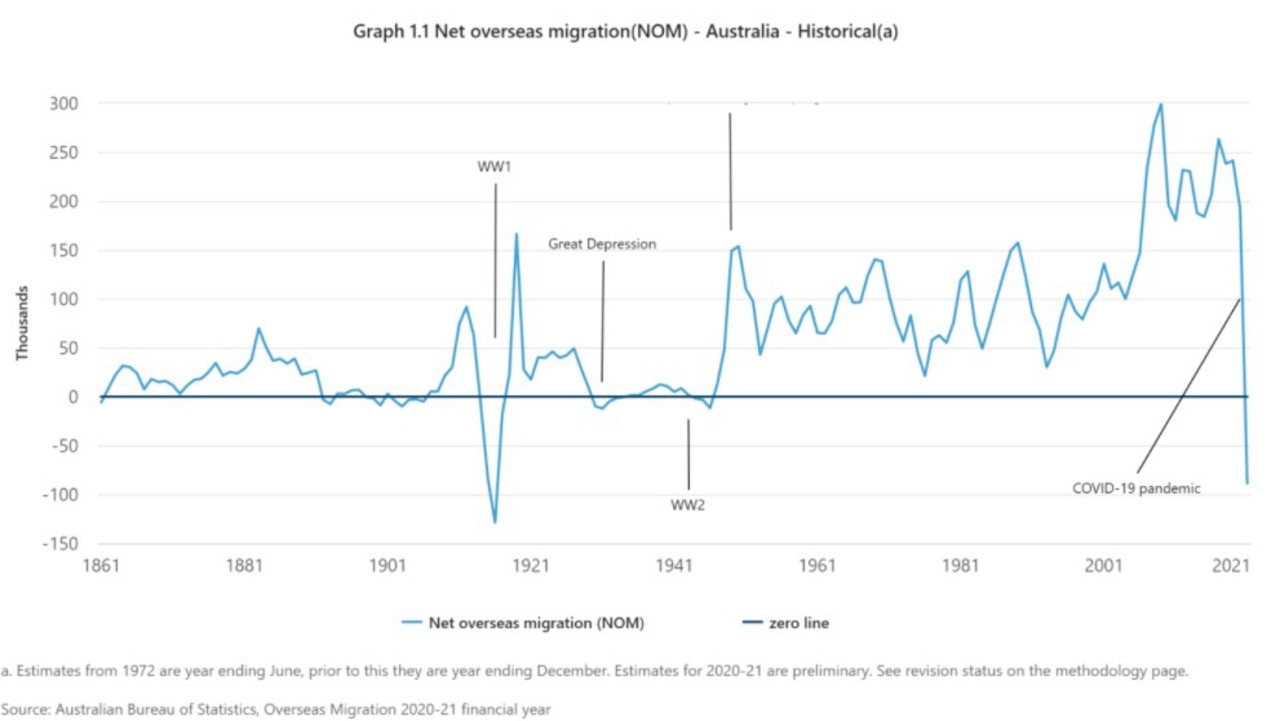Wages haven’t risen rapidly despite low unemployment
With employers struggling to fill positions it would be easy to assume wages are rising vastly. Turns out Aussies are losing out.
Since the pandemic first started over two years ago, it has brought a great deal of change to our world, much of it bad. But around the globe, there is are also signs of the pandemic driving positive change too, such as wage growth finally being brought back to life after spend much of the last decade below the long term trend.
The general theory that underpins wage growth is effectively, once a certain tightness of the labour market is achieved, workers will enjoy a greater degree of leverage and enjoy significantly higher rates of wage growth than they otherwise would.
This is referred to as the ‘Non-accelerating inflation rate of unemployment’ or NAIRU, which basically defines at what unemployment rate wages growth will begin to take flight.
This deal, that if Australians work hard enough to drive a strong economy we get rewarded with wage growth, is practically an unspoken covenant between everyday people and policymakers.
Ideal conditions for wage growth
Despite the challenges that the pandemic has thrown up, Australia is arguably experiencing the best conditions for wage growth that the nation has seen in decades.
During the 2020-21 financial year, Australia saw the largest fall in net overseas migration since the First World War, with more than 88,000 residents choosing to leave our shores during that time.

This is quite the contrast to the more than 241,000 migrants Australia added to its population during the last financial year which was not impacted by the pandemic (2018-19).
While the impact of high immigration on wages has long been hotly debated, in July last year Reserve Bank of Australia Governor Philip Lowe provided the strongest evidence yet that immigration was a key factor in the weak wages growth Australia had seen in recent years.
Mr Lowe stated the ability of Australian companies to bring in foreign workers “dilutes the upward pressure on wages”.
“In my view, this is one of the factors that has contributed to wages being less sensitive to shifts in demand than was once the case,” Mr Lowe said
With the release of the latest jobs figures from the Australian Bureau of Statistics (ABS), the nation recorded its lowest unemployment rate since September 2008, sitting at just 4.2 per cent.
Excluding a short period in 2008 shortly before the global financial crisis, this is the lowest Australian unemployment has been since comparable statistics began in 1978.
Yet despite everything seemingly going right for Aussie workers in the wage growth stakes, wages grew by just 2.2 per cent in the year to September 2021.
Australia lagging behind
While Australia’s wage growth was languishing at weak pre-pandemic levels, wage growth in other nations was beginning to take off.
According to data from the Atlanta branch of the US Federal Reserve, US wages grew by 3.6 per cent in the year to September 2021.
In the UK, the divergence was even greater, with average wages growing 5 per cent over the same comparable period.
This raises an interesting and potentially challenging conundrum for Australians and policymakers, is Aussie wage growth merely lagging the rest of the world or does the economy have some form of deeper issue?
Promising indicators
Amid Australia’s concerning lagging behind, there are some indicators that suggest that the long wait for stronger wages growth may be coming to an end.

According to an analysis by ANZ Research, the nation’s labour under-utilisation rate is pointing to wage growth exceeding 3 per cent for the first time since 2012.
Job vacancies data from CommSec are also cause for optimism, with job openings currently running at a 13 year high.

Whether these promising indicators will translate into high wages growth remains to be seen, the road ahead is an uncertain and potentially challenging one.
The headwinds to strong wage growth
With Australia’s borders set to reopen to tourists and temporary visa holders on February 21, the nation’s reversing rate of net overseas migration will shift from a tailwind supporting wages, into a headwind that the RBA concluded has been diluting upward pressure on wages for years.
It’s still only a relatively low share of Australian workers reporting a wage rise and expectations for year ahead wages growth remain relatively subdued.
— Shane Oliver (@ShaneOliverAMP) December 16, 2021
(Macquarie Macro Strategy charts) pic.twitter.com/LBRD5GzlBj
But as businesses consider raises for their employees, there are some concerning signs on the horizon for the global economy.
In its recent updated forecast, the IMF warned of “multiple challenges” in 2022 and warned of lower growth and higher inflation.
This echoes concerns from other organisations such as the World Bank, which updated its predictions to include a “pronounced slowdown” in growth over the next two years, with developing nations to be particularly hard hit.
The reality is the withdrawal of trillions of dollars’ worth of central bank and government stimulus was always going to be difficult. But with the additional challenges presented by inflation, rising interest rates and geopolitical upheaval, the task is significantly more difficult.
For Aussies hoping that wages growth will finally pick up after years of sub-par outcomes, how all the different factors will ultimately shake out remains unclear.
Tarric Brooker is a freelance journalist and social commentator | @AvidCommentator




